
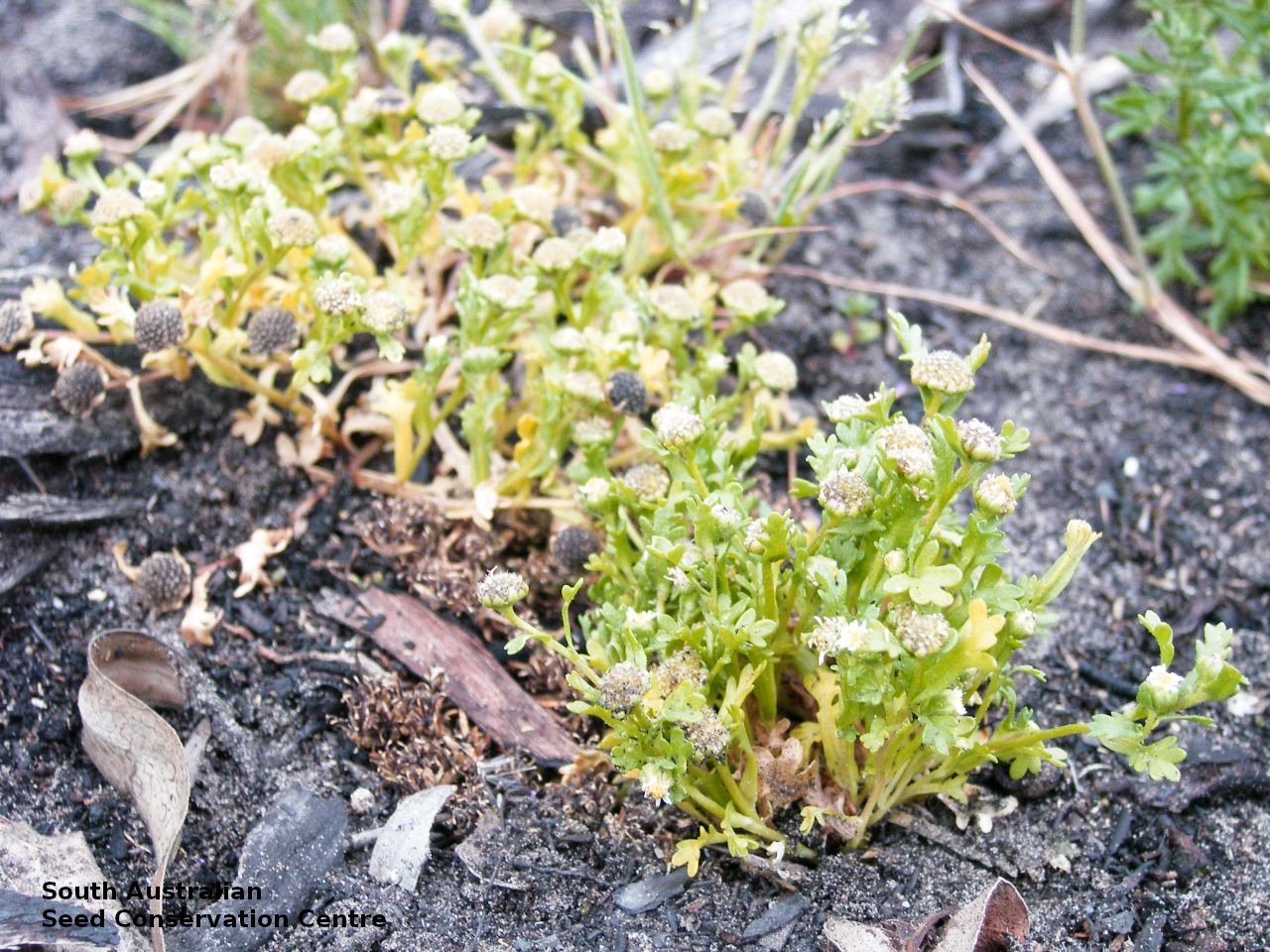
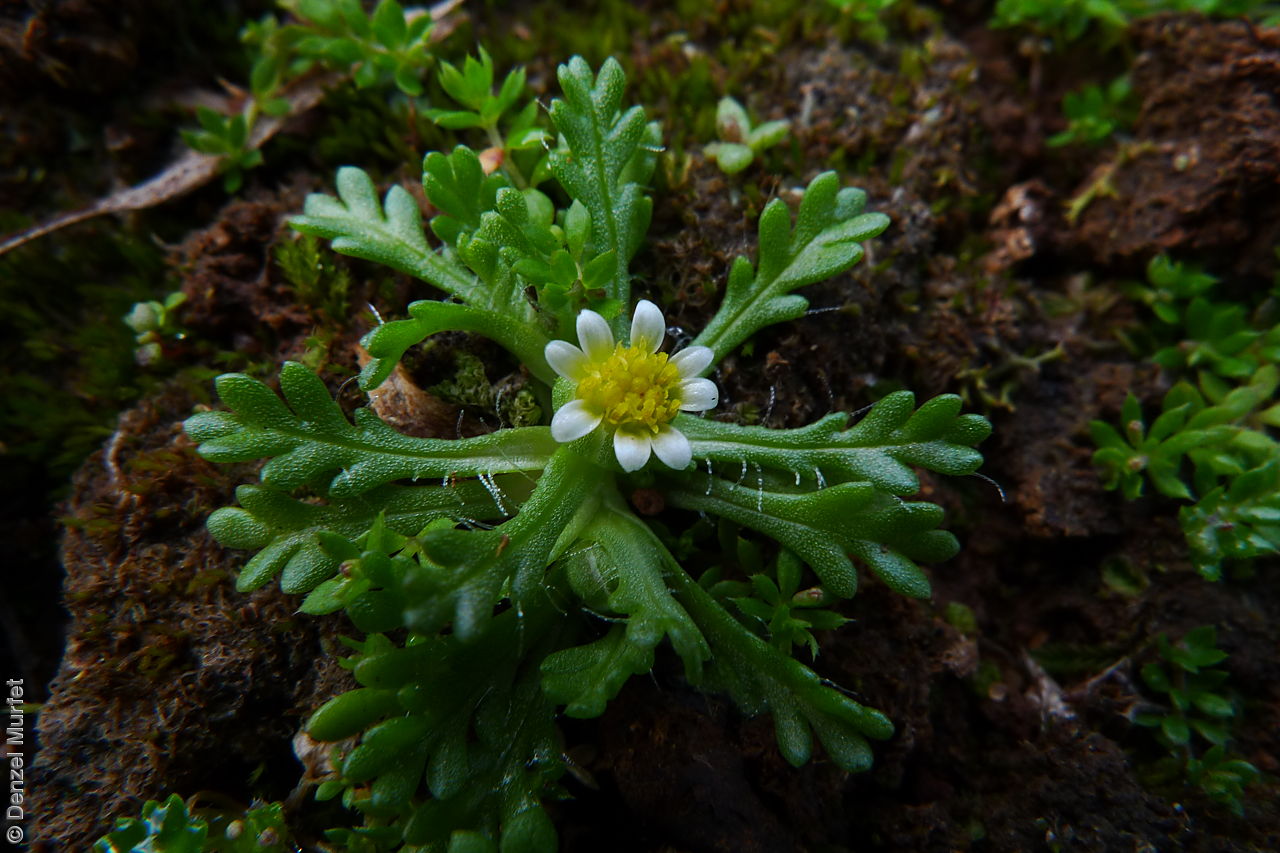
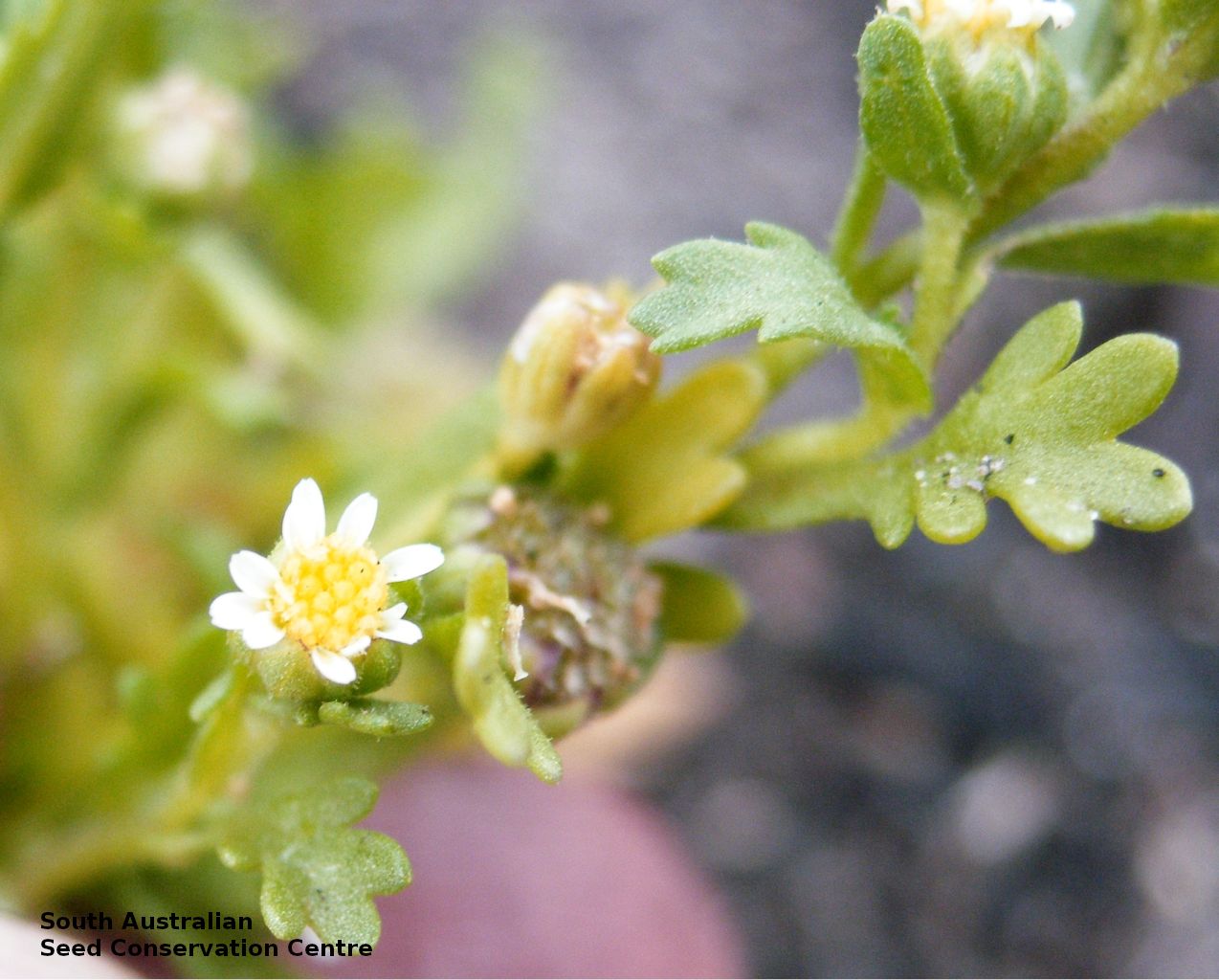
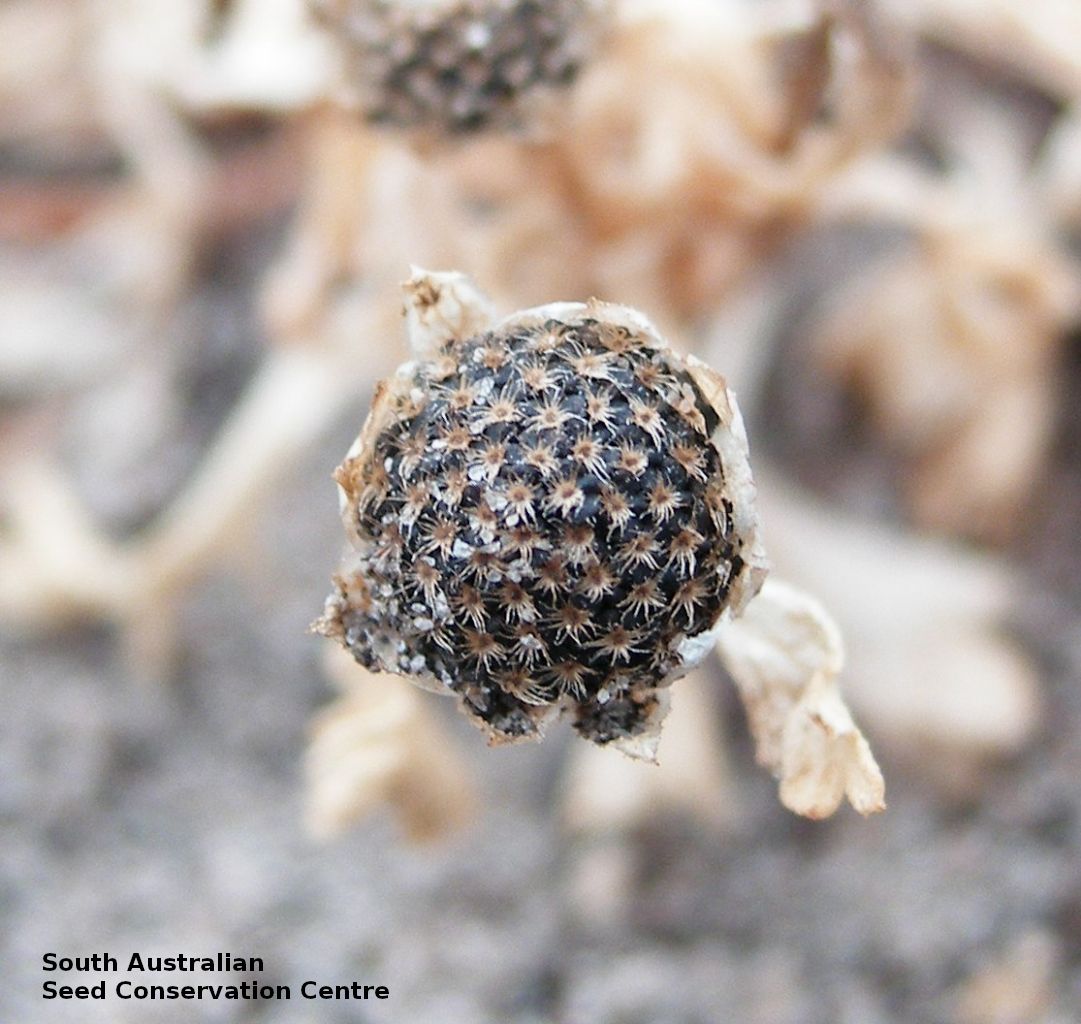
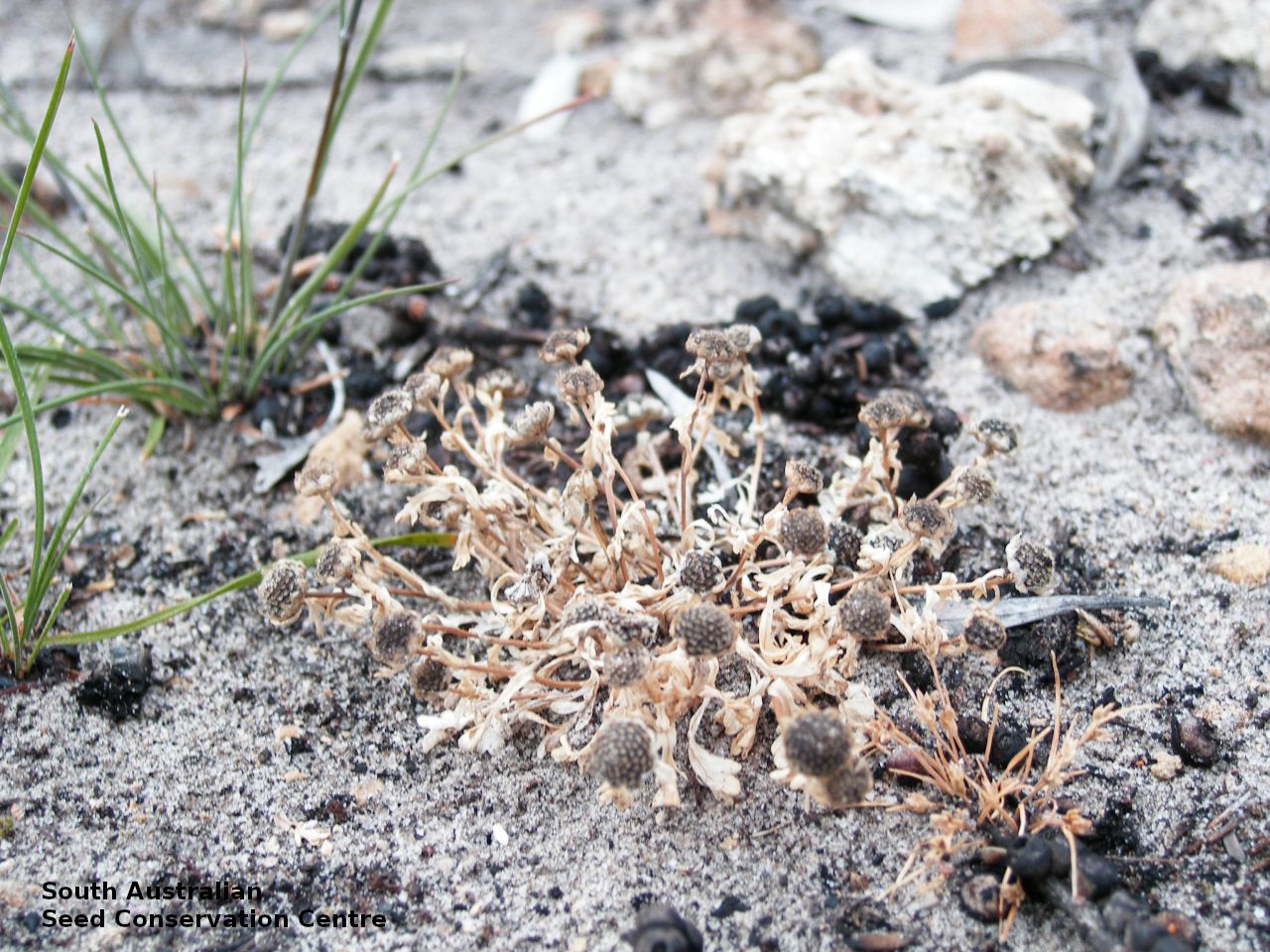

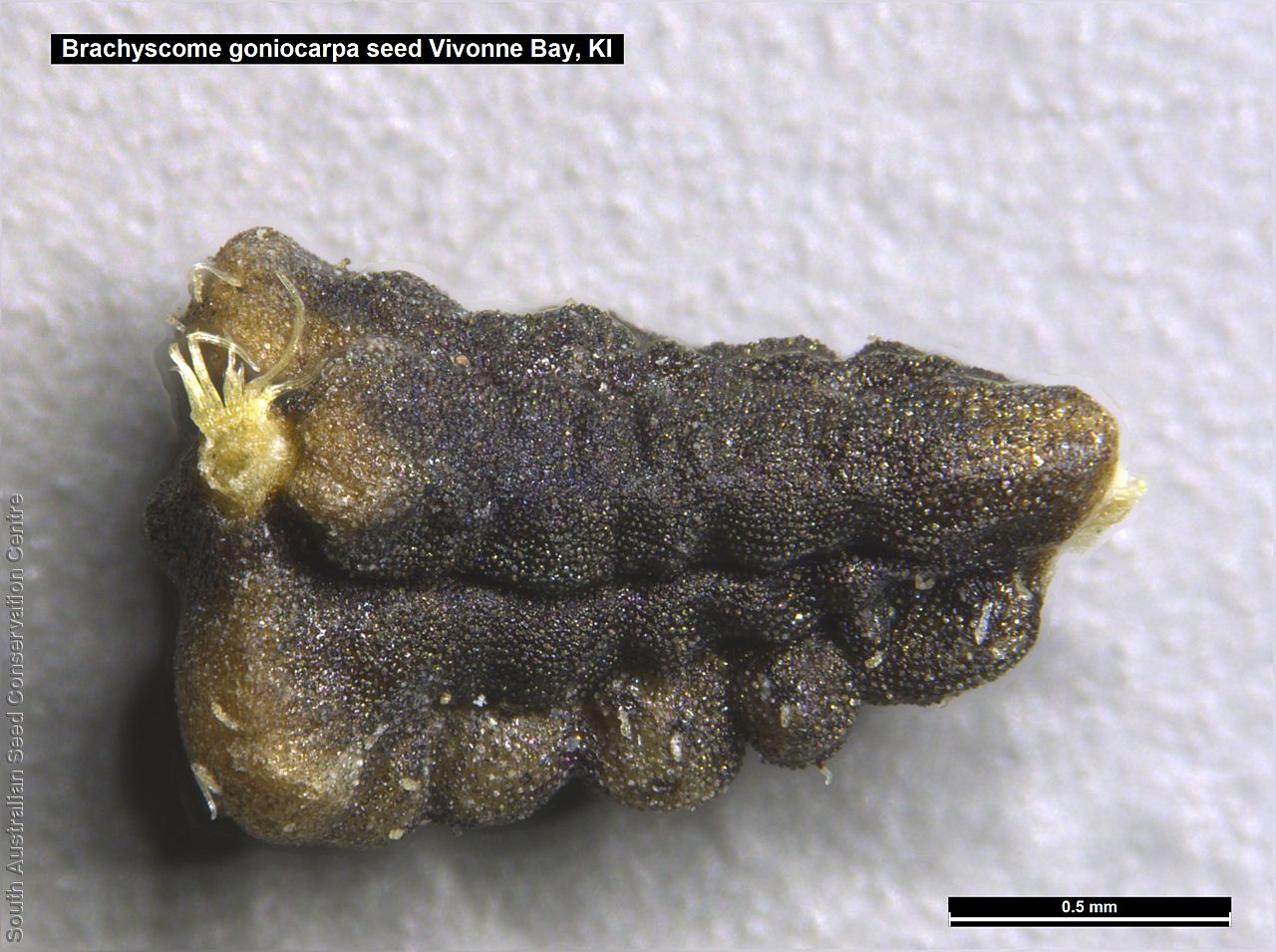
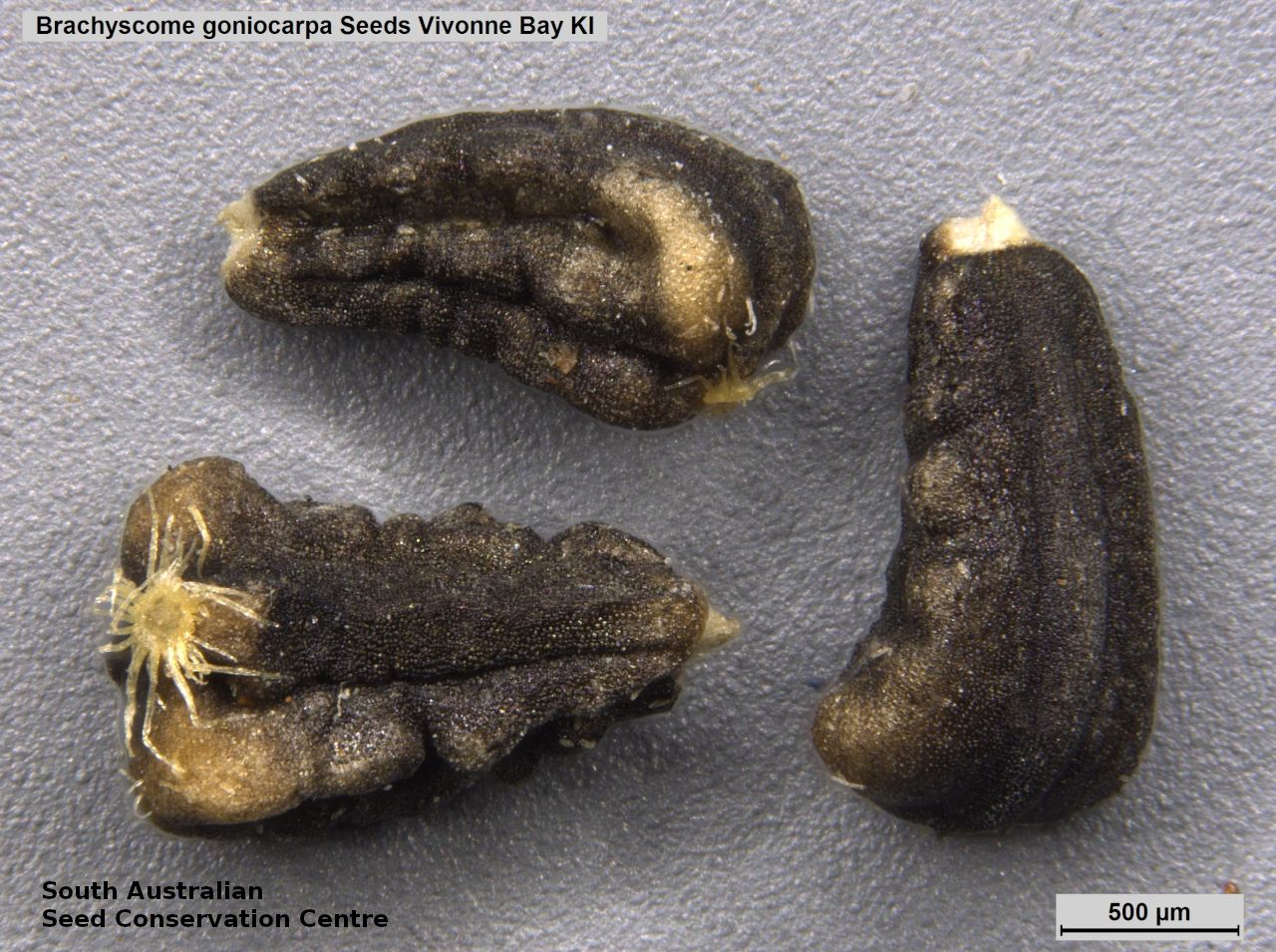
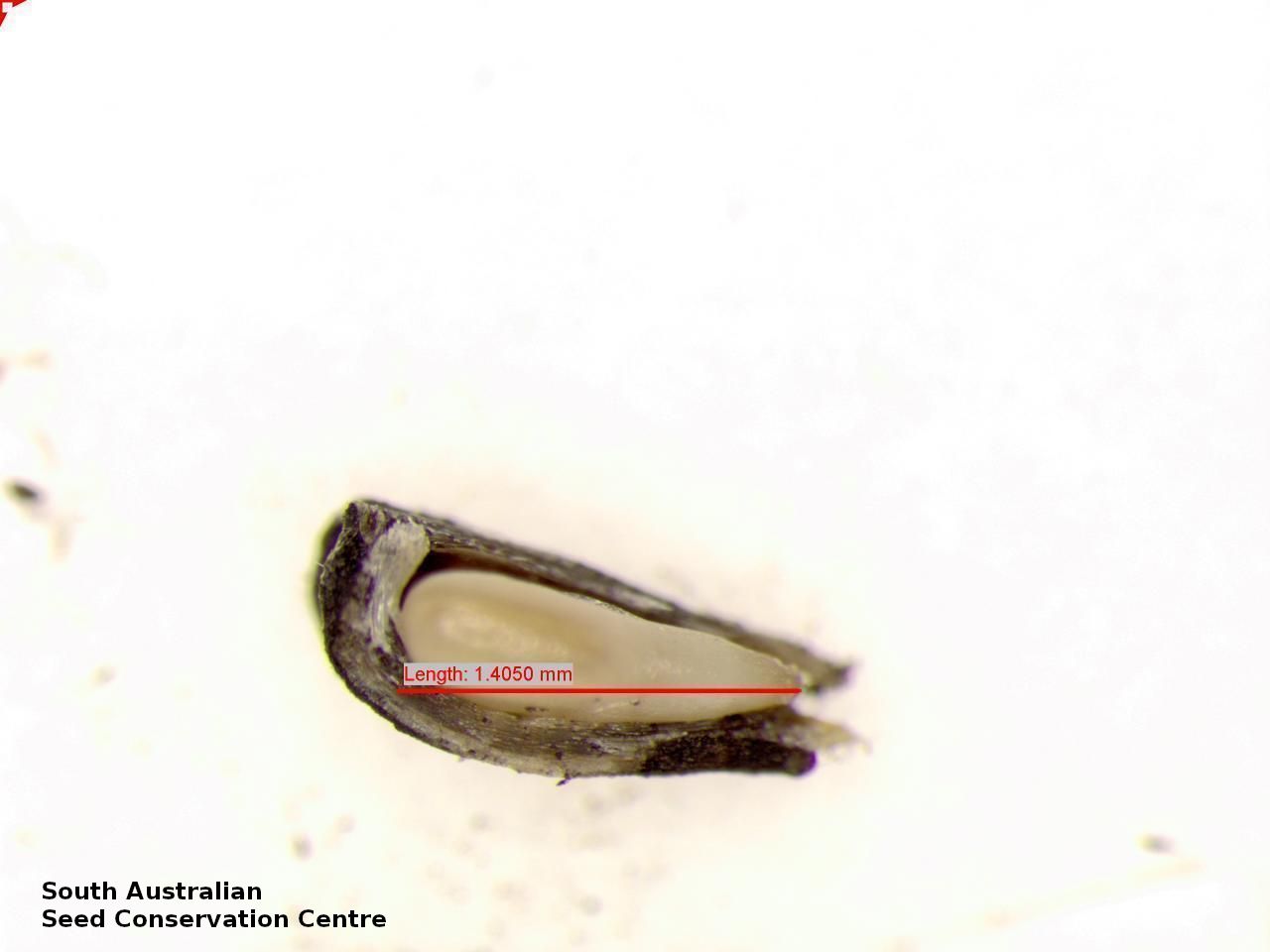

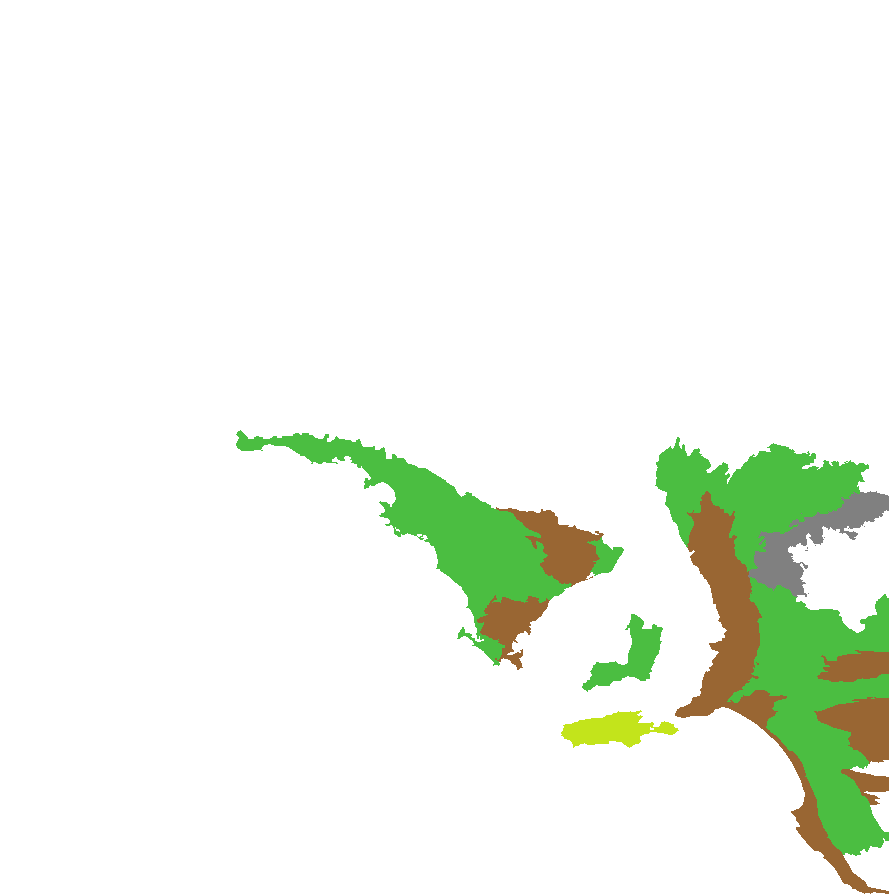
Botanical art
Prior names
Brachycome goniocarpa
Common names
Angle-fruit Daisy
Dwarf Daisy
Etymology
Brachyscome from the Greek 'brachys' meaning short and 'kome' meaning hair, referring to the tuft of short bristles or hairs of the pappus. Goniocarpa from the Greek 'gonia' meaning angle and 'carpos' meaning fruit, referring to the seed having many sides.
Distribution and status
Found in the southern part in South Australia, from Eyre Peninsula to the South-east, growing in damp shallow depressions on sand dunes and under eucalypts. Also found in Western Australia, New South Wales and Victoria. Native. Common in South Australia. Uncommon in Western Australia. Common in the other States.
Herbarium regions: Eastern, Eyre Peninsula, Northern Lofty, Murray, Yorke Peninsula, Southern Lofty, Kangaroo Island, South Eastern, Green Adelaide
NRM regions: Adelaide and Mount Lofty Ranges, Eyre Peninsula, Kangaroo Island, Northern and Yorke, South Australian Arid Lands, South Australian Murray-Darling Basin, South East
AVH map: SA distribution map (external link)
Plant description
Annual herb to 23 cm high with few, erect to decumbent, weak, hairy stems. Basal leaves spathulate and lobed to 4.5 cm long, soon withering. Other leaves spathulate to cuneate, distally lobed to 3 cm long and 6 mm wide, pubescent, glandular. Flowers small white daisy. Flowering between August and October. Fruits are brown-black daisy-heads. Seeds are black many angled seed to 2 mm long and 1 mm wide, with smooth bumpy surface. Seed embryo type is spatulate fully developed.
Seed collection and propagation
Collect seeds between October and December. Pick heads that are maturing, drying off, with brown seeds that dislodge easily. Place the seed-heads in a tray and leave to dry for a week. Then gently rub the heads by hand to dislodge the seeds. Use a sieve to separate the unwanted material. Store the seeds with a desiccant such as dried silica beads or dry rice, in an air tight container in a cool and dry place. Seed viability is usually high. This species has physiological dormancy that needs to be overcome for the seed to germinate .Gibberellic acid (250 mg/L added to water agar) may improve germination, particularly under diurnal summer conditions or constant temperatures ranging from 17.5 - 28.5 degrees celsius.
| Location | No. of seeds (weight grams) | Number of plants | Date collected | Collection number Collection location | Date stored | % Viability | Storage temperature |
|---|---|---|---|---|---|---|---|
| BGA MSB | 31,000 (11.98 g) 17,000 (8.08 g) | 50 | 1-Oct-2007 | RJB74324 South Eastern | 19-Sep-2008 | 90% | -18°C |
| BGA | 7,500 (2.82 g) | 22-Oct-2007 | PJA156 South Eastern | 1-Jan-2012 | 100% | -18°C | |
| 22-Oct-2007 | PJA156 South Eastern | 1-Nov-2017 | 100% | -18°C |
Number of plants: This is the number of plants from which the seeds were collected.
Collection location: The Herbarium of South Australia's region name.
% Viability: Percentage of filled healthy seeds determined by a cut test or x-ray.